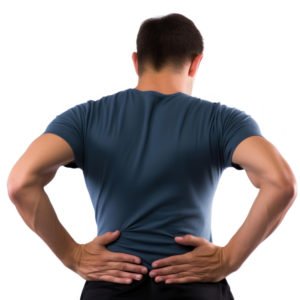- Conditions
- Treatments
- Patients
- Practice
- Dr. Tian Xia
- Heather Cottini
- Andry Khlopas
- Lyndsey Johnson
- Dr Michael G Banuelos
- Linda H. Morris
- Stacia Jones
- Hoai Luu
- Dr Ricardo Knight
- Finnbar Higgins
Chiropractors
Physical Therapist
- Blog
Conditions
Spondylosis
is a term used in place of degenerative osteoarthritis involving the joints between the spinal vertebrae center and/or the neural foramina.
When the same condition occurs in the zygapophysial joints, it is referred to as a facet joint syndrome. If the condition is severe, it can lead to increased pressure on nerve roots which might result in the motor or sensory disturbances such as paresthesia, weakness of limb muscles or pain.

When there is a narrowing of the space that exists between two adjacent vertebrae, the resulting compression of the nerve root might cause radiculopathy which is the motor and sensory disturbance such as shoulder, arm, neck, back and leg pain characterized by weakness of muscles.
In rare cases, the direct pressure on the spinal cord can lead to myelopatth accompanied by gait dysfunction, global weakness, loss of bowel and bladder control.
Spondylosis patients might experience paresthesia, which is a phenomenon of shocks in the legs and hands as a result of lack of blood flow and nerve compression.
Cervical Spondylosis is the name given when the neck vertebrae are involved. When the lower back is involved, the condition is referred to as lumbar Spondylosis.
Signs and Symptoms
Some of the common symptoms experienced by Spondylosis sufferers include pain in the area of Spondylosis which is usually in the neck or in the back.
In cases where the herniated disc leads to a pinched nerve, there might ne pain in the limb. Bulging disc related back pain gets worse with prolonged sitting, standing or a forward bend.
When the nerve is pinched, there might be symptoms of tingling and numbness and when it is severely pinched there might be extreme weakness in the affected area.
Causes
The aging process has been identified as a predominant cause of this condition, which is also referred to as spinal arthritis. Since we put a lot of stress on our bodies in our daily activities, over the years of strain and stress, there are certain structures that will change in the spine.
Long before you experience the pain, the stiffness or any other symptoms, your spine structures are already degenerating or wearing out. Life style choices could also influence the risk factor.
Smoking can adversely affect the discs and increase their rate of degeneration. Smoking will reduce the water content in the disc and this will leave them susceptible to wear and tear.
Diagnosis
A cervical compression test which is performed by a medical practitioner through the lateral flexing and putting downward pressure on the patient’s head is one of the diagnostic methods used.
Positive confirmation of cervical Spondylosis is when there is shoulder or neck pan when the head is flexed. Spondylosis might also be confirmed by the feeling of electrical shocks with neck flexion, a condition known as Lhermitte sign.
The reduce neck motion is a common diagnosis. MRI testing is a non-invasive diagnosis method that will give positive results.
Services
Prevention
Scientifically, Spondylosis is a degenerative process and there is no known procedure that can be used in the prevention of a degenerative pathologic process.
Though this is the case, there are measures which are used in the treatment that can also be employed in preventing the back pain and the neck pain that results from Spondylosis.
Treatment
The treatment methods followed in managing Spondylosis are mostly conservative. This condition has been reported to be managed through patient education on lifestyle choices, physical therapy and the use of non-steroidal anti-inflammatory drugs.
Though with limited benefits, other alternative methods of treatment such as yoga, acupuncture, trigger-pint therapy, and massage may be used in managing Spondylosis.
Physical therapy has been used in the restoration of motion range, strengthening of the core and improving flexibility. Decompressive therapies are also employed in the alleviation of pain cause by the condition. It is important to note that the degeneration cannot be cured by chiropractic or physical therapy.
Surgery
There are many surgical procedures that have been developed with an aim of alleviating the symptoms of Spondylosis. The vertebral column is approached by the surgeon from the rear, front or side and in the process, osteophytes and in some cases pieces of the intervertebral disc are eliminated.
The surgery is aimed art reducing the pressure on the nerve roots or the spinal cord and consequently dealing with the symptoms.

